Results 5,171 to 5,180 of 12096
Thread: Anandtech News
-
07-15-15, 03:00 PM #5171
Anandtech: Windows 10 Build 10240 Released To All Insiders
Today Microsoft unleased build 10240 to both the fast and slow rings for Windows Insiders. The Verge reported earlier today that build 10240 would be the “RTM” or “Release to Manufacturing” build and while that has not officially been announced, this build does take some big steps towards being less of a testing build and more of a release candidate.
One obvious change that signals this is not a typical beta build is that the Windows Version watermark in the bottom right corner of the screen is now gone. Another point to make is that this build has been released to both the fast and slow rings at the same time, so clearly they have tested well internally. Since it is in the slow ring, typically that means that there will be ISOs released but perhaps it is too early for that.
The blog post doesn’t have much else in the way of details which makes sense since they have moved into a bug fixing phase rather than adding features. One thing that they did say is that their new browser, Microsoft Edge, continues to receive performance updates and they show it faster than Chrome in several javascript benchmarks. This is in line with what I tested back in January when the Edge rendering and ECMAScript engines could be enabled inside of Internet Explorer 11. I’m downloading the latest build now so once completed I’ll compare it to the numbers we saw in January to see what kind of increases in performance (if any) have been made in the last six months.
The touch first versions of Office have been available on Windows 10 for a while now, and they have now dropped the preview moniker but gained the Mobile name to distinguish them from the desktop counterparts. On phones, the mobile name is not necessary since you can’t have both installed anyway.
Today marks two weeks until launch, and the RTM build (if this is it) will be shipped to OEMs to use as the basis for them to install on new hardware. For those that are not in the Windows Insider program, up until now every new build has been a full install of Windows overtop of the existing one, and once they move to RTM it will likely shift to a Windows Update style where just components are updated rather than the entire OS, which should make it a lot quicker to get updates.
Check out Windows Update now and be sure to be signed in with your Windows Insider Microsoft Account in order to get the latest build.
Source: Windows Blog
More...
-
07-15-15, 11:01 PM #5172
Anandtech: Intel Announces Fiscal Year 2015 Quarter Two Results
Today Intel announced their second quarter earnings, which came in at $13.2 billion. This is down 5% from Q2 2014, but was in-line with Intel’s forecast. It actually beat many investors’ predictions, with some calling for Q2 to be closer to $13 billion. The trend down is mostly due to declining PC sales now that the XP refresh cycle is complete. Intel also had quite a bit of news to announce which we will get to in a moment.
Taking a look at the comprehensive numbers, Intel lost a couple of points on gross margin as compared to Q2 2014, with the most recent quarter coming in at 62.5%. Operating income was down 25% at $2.9 billion, but net income was only down 3% at $2.7 billion. Earnings per share came in at $0.55 which is flat year-over-year.
Investors received $1.1 billion in dividends last quarter, and Intel used $697 million to repurchase 22 million outstanding shares.
Now that Intel has merged their mobile group into the Client Computing Group, we have a slightly less clear picture of what all of their products are doing, but it should help push their mobile efforts forward, which is something we saw with the Atom x7 launch, which moved Atom to 14nm before Intel’s quad-core desktop parts. It may be repeated at 10nm, but for that we will have to wait until 2017 to know for sure. For the quarter, the Client Computing Group had revenue of $7.5 billion, which is up 2% over Q1 2015 but down 14% over Q2 2014. As I already alluded to, a big part of that is declining PC sales. The decline was stronger than Intel forecasted and inventory levels did not come down as quickly as expected. This will have a lingering effect as OEMs purchase less hardware moving forward until they are able to move through what they have already purchased.Intel Q1 2015 Financial Results (GAAP) Q2'2015 Q1'2015 Q2'2014 Revenue $13.2B $12.8B $13.8B Operating Income $2.9B $2.6B $3.8B Net Income $2.7B $2.0B $2.8B Gross Margin 62.5% 60.5% 64.5% Client Computing Group Revenue $7.5B +2% -14% Data Center Group Revenue $3.9B +5% +10% Internet of Things Revenue $559M +5% +4% Software and Services Revenue $534M flat -3% All Other Revenue $715M +16% +38%
During the quarter, Atom x3, x5, and x7 were announced and are rolling out. We’ve already had a chance to see the x7 in the Microsoft Surface 3 and the rest of the Cherry Trail stack is ramping up with the SoFIA 3G and 3G-R products. The 4G version of x3, SoFIA LTE, is sampling now for network certification and is expected to ship in volume in the first half of 2016. The CAT-10 7360 LTE modem is on track for shipment this year to customers.
Looking forward to Q3, Intel has announced that the sixth generation of Core Products, code named Skylake, has been qualified for production which means that it should be ramped up for launch in the next while. This is going to be the 14nm tock, and will introduce a new architecture on their 14nm FinFET platform. This, as well as the Windows 10 launch, may help soften the PC sales decline.
Intel’s Data Center Group had revenue of $3.9 billion, which is up 5% over Q1 2015 and 10% year-over-year. Operating income for this group was $1.8 billion, which surpassed the $1.6 billion of the Client group. Intel expects their server infrastructure to continue to grow for the rest of the fiscal year. Though not as stimulating as discussion of Skylake, Intel’s growth in this area has been on the back of their high IPC Core lineup and as Johan De Gelas has shown, it’s going to be difficult for someone to overthrow Intel in this arena at the moment.
Internet of Things is always a hot topic, and this group had revenue of $559 million, which was up 5% over Q1 2015 and 10% over Q2 2014, so they have seen some small growth in this area. If their plans succeed, they should have a larger piece of this growing pie going forward. At the beginning of June, Intel announced that they are purchasing FPGA specialist Altera. CEO Brian Krzanich discussed this on the earnings call, and Intel sees this as a good opportunity to leverage their advanced process for Altera’s FPGA business. The expect to continue to support and develop, as well as increase the install base, of Altera’s ARM based products. Brian Krzanich stated: “history tells us that the FPGA vendor who is first to a manufacturing process node enjoys a market segment share advantage over the life of that node” and if Intel can leverage its process advantage for this they should be able to gain some traction in the market. More info with Altera will be brought up on the Q3 earnings call.
Intel’s Software and Services group, which includes McAfee, had revenue of $534 million, which was flat sequentially and down 3% year-over-year.
Looking forward, Intel’s earnings expectations for Q3 is $14.3 billion, plus or minus $500 million, with a gross margin of 63%. For the full fiscal year 2015, Intel has revised their outlook to be down 1% rather than flat for the entire year.
They also announced a big change in their tick-tock which we will cover in its own piece.
Source: Intel
More...
-
07-16-15, 02:39 AM #5173
Anandtech: HTC Brings The One M9+ To Europe
Earlier this year, HTC released the One M9+ in the Asia-Pacific region of the world. The One M9+ is visually similar to the normal One M9, but with significant differences to the hardware specifications. It swaps the Qualcomm SoC in the M9 for a MediaTek chip, and moves to a larger and higher resolution display. Today HTC is bringing the One M9+ to various markets in Europe. To see how the One M9+ compares to the standard One M9 you can check out the spec comparison in the chart below.
The One M9+ shares a number of specifications with the normal HTC One M9. However, it resembles the HTC One ME even more closely. The SoC, RAM, storage, connectivity, and battery capacity are all the same as the HTC One ME. It also sports the fingerprint sensor beneath the display. The big difference between the One ME and the One M9+ is that the latter sports an aluminum unibody design instead of plastic, and also brings back HTC's secondary duo-cam camera. The 20MP camera of the M9+ is still the Toshiba sensor shared with the M9.HTC One M9+ HTC One M9 SoC MT6795 2.2GHz 8xA53 MediaTek Helio X10 MSM8994 2/1.5 GHz A57/A53 Snapdragon 810 RAM/NAND 3GB LPDDR3
32GB NAND + microSD3GB LPDDR4
32GB NAND + microSDDisplay 5.2” 1440p IPS LCD 5” 1080p IPS LCD Network 2G / 3G / 4G LTE (MediaTek Category 4 LTE) 2G / 3G / 4G LTE (Qualcomm UE Category 7/9 LTE) Dimensions 150.99 x 71.99 x 9.61mm 168g 144.6 x 69.7 x 9.61mm 157g Camera 20MP Rear Facing w/ 1.12 µm pixels, 1/2.4" CMOS size, f/2.2, 27.8mm (35mm effective)
2MP Duo cam
4MP Front Facing, 2.0 µm pixels, f/2.0 26.8mm (35mm effective20MP Rear Facing w/ 1.12 µm pixels, 1/2.4" CMOS size, f/2.2, 27.8mm (35mm effective)
4MP Front Facing, 2.0 µm pixels, f/2.0 26.8mm (35mm effective)Battery 2840 mAh (10.79 Whr) 2840 mAh (10.79 Whr) Connectivity 802.11a/b/g/n/ac + BT 4.1, GNSS, NFC, DLNA, microUSB 2.0 802.11a/b/g/n/ac + BT 4.1, GNSS, NFC, DLNA, microUSB 2.0 SIM Size NanoSIM NanoSIM
While the One M9+ is already available in India, the expansion to Europe means that consumers have more options for smartphones from HTC. It's also a big win for MediaTek to have a device with their Helio X10 SoC shipping. In Europe, the One M9+ will be released in silver, grey, and gold colors. Pricing is currently unknown but one can make an educated guess based on the pricing in India and China. Availability for specific markets in Europe will be announced as time goes on.
More...
-
07-16-15, 08:06 AM #5174
Anandtech: European Union Opens Up Antitrust Investigation Into Qualcomm
Word comes out of Europe this morning that the European Union’s executive body, the European Commission, will be opening up an anti-trust investigation into Qualcomm.
The Commission has investigated Qualcomm once before on potential FRAND patent violations, ultimately opting to close the investigation with no further action taken. This time the commission is investigating Qualcomm on two separate issues.
The first issue being investigated is over whether Qualcomm offered financial incentives to customers who used Qualcomm chips exclusively or near-exclusively, which would serve to lock out the competition in an anti-competitive manner. The second issue is whether Qualcomm engaged in outright predatory pricing, selling their chips below cost in order to dive out competition.
These investigations come after an extended period of success for Qualcomm, who for most the 28nm generation has been the leading SoC supplier for Android devices thanks to a combination of early success with LTE basebands and strong overall performance. The European Commission in turn believes that there may have also been anti-competitive aspects to this success, with Qualcomm engaging in practices to shut-out the competition via unfair pricing.
Pricing-related complaints are some of the hardest to prove in anti-competitive investigations, as a regulator needs to prove that any kind of low pricing comes from natural competition and not from prohibited attempts to rig the market. So the fact that the European Commission has publicly announced an investigation on these matters could very well mean the Commission has their work cut out for them, or that they believe they have strong enough evidence to bring their investigation to the public stage.
Qualcomm for their part is denying that they have engaged in any anti-competitive practices, stating that the Commission’s concerns are “without merit.” That said, this comes just 5 months after Qualcomm was found guilty by Chinese regulators of engaging in anti-competitive patent bundling in China, a finding that cost Qualcomm $975 million in fines. Any EU fine, by comparison, could be up to 10% of Qualcomm’s global revenue, along with any structural/behavioral changes demanded by regulators.
More...
-
07-16-15, 09:30 AM #5175
Anandtech: Tick Tock On The Rocks: Intel Delays 10nm, Adds 3rd Gen 14nm Core Product
For almost as long as this website has been existence, there has been ample speculation and concern over the future of Moore’s Law. The observation, penned by Intel’s co-founded Gordon Moore, has to date correctly predicted the driving force behind the rapid growth of the electronics industry, with massive increases in transistor counts enabling faster and faster processors over the generations.
The heart of Moore’s Law, that transistor counts will continue to increase, is for the foreseeable future still alive and well, with plans for transistors reaching out to 7nm and beyond. However in the interim there is greater concern over whether the pace of Moore’s Law is sustainable and whether fabs can continue to develop smaller processes every two years as they have for so many years in the past.
The challenge facing semiconductor fabs is that the complexity of the task – consistently etching into silicon at smaller and smaller scales – increases with every new node, and trivial physics issues at larger nodes have become serious issues at smaller nodes. This in turn continues to drive up the costs of developing the next generation of semiconductor fabs, and even that is predicated on the physics issues being resolved in a timely manner. No other industry is tasked with breaking the laws of physics every two years, and over the years the semiconductor industry has been increasingly whittled down as firms have been pushed out by the technical and financial hurdles in keeping up with the traditional front-runners.
The biggest front runner in turn is of course Intel, who has for many years now been at the forefront of semiconductor development, and by-and-large the bellwether for the semiconductor fabrication industry as a whole. So when Intel speaks up on the challenges they face, others listen, and this was definitely the case for yesterday’s Intel earnings announcement.
As part of their call, Intel has announced that they have pushed back their schedule for the deployment of their 10nm process, and in turn it has affected their product development roadmap. Acknowledging that the traditional two year cadence has become (at best) a two and a half year cadence for Intel, the company’s 10nm process, originally scheduled to go into volume production in late 2016, is now scheduled to reach volume production in the second half of 2017, a delay of near a year. This delay means that Intel’s current 14nm node will in effect become a three year node for the company, with 10nm not entering volume production until almost three years after 14nm hit the same point in 2014.
Intel’s initial struggles with 14nm have been well publicized, with the company having launched their 14nm process later than they would have liked. With their 22nm process having launched in Q2 of 2012, 14nm didn’t reach the same point until Q4 of 2014, and by traditional desktop standards the delay has been even longer. Ultimately Intel was hoping that the delays they experienced with 14nm would be an aberration, but that has not been the case.
Intel’s latest delay ends up being part of a larger trend in semiconductor manufacturing, which has seen the most recent nodes stick around much longer than before. Intel’s leading node for desktop processors in particular has been 22nm for close to three years. Meanwhile competitors TSMC and Samsung have made much greater use of their 28nm nodes than expected, as their planar 20nm nodes have seen relatively little usage due to leakage, causing some customers to wait for their respective 16nm/14nm FinFET nodes, which offer better electrical characteristics at these small geometries than planar transistors. Observationally then there’s nothing new from Intel’s announcement that we haven’t already seen, but it confirms the expected and all too unfortunate news that even the industry’s current bellwether isn’t going to be able to keep up with a traditional two year cadence.
Meanwhile the fact that 14nm is going to be around for another year at Intel presents its own challenges for Intel’s product groups as well as their fabrication groups, which brings us to the second part of Intel’s announcement. Intel’s traditional development model for processors over the last decade has been the company’s famous tick-tock model – releasing processors built on an existing architecture and a new manufacturing node (tick), and then following that up with a new architecture built on the then-mature manufacturing node (tock), and repeating the cycle all over again – which in turn is built on the two year development cadence. Intel wants to have new products every year, and alternating architectures and manufacturing nodes was the sanest, safest way to achieve that. However with the delay of 10nm, it means that Intel now has an additional year to fill in their product lineup, and that means tick-tock is on the rocks.
Previously rumored and now confirmed by Intel, the company will be developing a 3rd generation 14nm Core product, to fit in between the company’s forthcoming 14nm Skylake (2015) and 10nm Cannonlake (2017) processor families.
The new processor family is being dubbed Kaby Lake. It will be based on the preceding Skylake micro-architecture but with key performance enhancements to differentiate it from Skylake and to offer a further generation of performance improvements in light of the delay of Intel’s 10nm process. Intel hasn’t gone into detail at this time over just what those enhancements will be for Kaby Lake, though we are curious over just how far in advance Intel has been planning for the new family. Intel has several options here, including back-porting some of their planned Cannonlake enhancements, or looking at smaller-scale alternatives, depending on just how long Kaby Lake has been under development.Intel Core Family Roadmap Previous Roadmap New Roadmap 2014 Broadwell Broadwell 2015 Skylake Skylake 2016 Cannonlake Kaby Lake (New) 2017 (10nm New Architecture) Cannonlake 2018 N/A (10nm New Architecture)
Kaby Lake in turn comes from Intel’s desire to have yearly product updates, but also to meet customer demands for predictable product updates. The PC industry as a whole is still strongly tethered to yearly hardware cycles, which puts OEMs in a tight spot if they don’t have anything new to sell. Intel has already partially gone down this route once with the Haswell Refresh processors for 2014, which served to cover the 14nm delay, and Kaby Lake in turn is a more thorough take on the process.
Finally, looking at a longer term perspective, while Intel won’t be able to maintain their two year development cadence for 10nm, the company hasn’t given up on it entirely. The company is still hoping for a two year cadence for the shift from 10nm to 7nm, which ideally would see 7nm hit volume production in 2019. Given the longer timeframes Intel has required for both 14nm and 10nm, a two year cadence for 7nm is definitely questionable at this time, though not impossible.
For the moment at least this means tick-tock isn’t quite dead at Intel – it’s merely on the rocks. What happens from here may more than anything else depend on the state of the long in development Extreme Ultra-Violet (EUV) technology, which Intel isn’t implementing for 10nm, but if it’s ready for 7nm would speed up the development process. Ultimately with any luck we should hear about the final fate of tick-tock as early as the end of 2016, when Intel has a better idea of when their 7nm process will be ready.
More...
-
07-16-15, 09:30 AM #5176
Anandtech: ADATA XPG SX930 (120GB, 240GB & 480GB) SSD Review: JMicron JMF670H Debuts
At ComputexADATA had a variety of new SSDs on display. While most were based on upcoming technologies such as TLC NAND and the PCIe/NVMe interface, the company also displayed an XPG SX930 - an update to ADATA's high-end XPG lineup. The series was in need of a refresh because the SX900 dates back to 2012, so with the SX930ADATA is hoping to breath new life into its enthusiast SSDs. The SX930 is equipped with JMicron's new JMF670H controller, 'enterprise-grade' Micron 16nm 128Gbit NAND and features a five-year warranty. Read on to find out how JMicron's new controller stacks up against the competition!
More...
-
07-16-15, 07:00 PM #5177
Anandtech: AMD Posts Q2 2015 Results: Revenue Falls Once More
As financial week rolls along this week, today AMD announced their second quarter 2015 financial results. Earlier this month ahead of today’s announcement the company issued a warning for their Q2 earnings, significantly revising down their projections for revenue and gross margin. As a result of AMD’s earlier warning today’s announcement doesn’t have too many surprises in it, but it’s none the less an important and unfortunately painful quarter for AMD.
For the quarter AMD recorded $942 million in revenue. This marks the first time in quite a number of years that AMD’s quarterly revenue has dipped below $1 billion, indicating the challenges the company has faced as the PC market continues to be soft and AMD CPU/APU sales have declined. All told the company’s revenue has dropped 8% compared to Q1, and on a year-over-year basis it has dropped 35%AMD Q2 2015 Financial Results (GAAP) Q2'2015 Q1'2015 Q2'2014 Revenue $942M $1.03B $1.44B Gross Margin 25% 32% 35% Operating Income -$137M -$137M $63M Net Income -$181M -$180M -$36M Earnings Per Share -$0.23 -$0.23 -$0.05
Unsurprisingly given AMD’s low revenue, operating and net income for the quarter were both losses. On a GAAP basis operating income was a $137 million loss while the net loss was $181 million, both of which are virtually unchanged from AMD’s Q1’15 performance. Meanwhile on a non-GAAP basis the operating income loss was $87 million and the net loss $131 million, both of which were accelerated versus the last quarter. On a year-over-year basis both GAAP and non-GAAP show a significant increase in losses versus Q2’14.
Meanwhile AMD’s gross margin has taken a hit as well. The GAAP gross margin is just 25%, while the non-GAAP gross margin is slightly better at 28%, the difference being due to AMD's $33 million charge to move 20nm products to FinFET. Both metrics are well below the kind of 30-35% margins AMD wants to sustain in the long run.AMD Q1 2015 Financial Results (Non-GAAP) Q2'2015 Q1'2015 Q2'2014 Revenue $942M $1.03B $1.44B Gross Margin 28% 32% 35% Operating Income -$87M -$30M $88M Net Income -$131M -$73M $38M Earnings Per Share -$0.17 -$0.09 $0.05
In discussing their financial results for the quarter, AMD cited the soft PC market as the biggest factor pulling down the company’s performance. Historically in turn Q2 is typically the softest quarter for technology companies, however in AMD’s case it has been especially soft. With AMD’s single biggest product line being APU sales and with those sales weaker than expected, it has significantly impacted AMD’s bottom line.
Of particular note, AMD is stating that they believe the impending launch of Windows 10 was a significant factor in their weak sales for the quarter, as consumers held back on buying new systems until the new OS is out, and OEMs held back in releasing newer designs in order to align those releases with the new OS. This has particularly impacted Carrizo, AMD’s latest generation mobile APU, given that it was released only two months before the launch of Windows 10. AMD is expecting that mobile sales will rebound once Windows 10 launches, though as we’ve seen with the launch of Windows 8 in 2012, that isn’t necessarily a given.
Breaking down AMD’s revenue by business, soft APU sales pulled down the Computing and Graphics business overall, and led to Enterprise, Embedded, and Semi-Custom carrying a larger share of the company. Computing and Graphics revenue was down 29% over Q1’15 and a staggering 54% over Q2’14, primarily due to weak sales of notebook APUs, while graphics revenue was also down. Despite this the ASPs for both CPUs/APUs and GPUs were up on both a sequential and year-over-year basis, as while overall sales are lower, the prices of what AMD has sold has increased thanks to a richer product mix and the launch of the R9 300/Fury series at the tail end of the quarter.AMD Q2 2015 Computing and Graphics Q2'2015 Q1'2015 Q2'2014 Revenue $379M $532M $828M Operating Income -$147M -$75M -$6M
Enterprise, Embedded, and Semi-Custom on the other hand had a much stronger quarter, with revenue there increasing 13% sequentially, though year-over-year revenue was still down by 8%. As part of AMD’s long-term plans they are attempting shift more of their resources and revenue over to this business, so any kind of growth is welcome growth for the company. However for this quarter in particular AMD was not prepared for such a high ratio of revenue from this business group, with the lower margin of AMD’s semi-custom products dragging down the overall gross margin.AMD Q2 2015 Enterprise, Embedded and Semi-Custom Q2'2015 Q1'2015 Q2'2014 Revenue $563M $498M $613M Operating Income $27M $45M $97M
Finally, compounding AMD’s difficulties this quarter was the impact of their previously announced plan to move the rest of their in-development 20nm products to a newer FinFET node. This project resulted in a further $33 million hit to AMD’s books, driving up losses and decreasing gross margins. The good news for AMD is that this is a one-time charge, so they won’t have to pay for it again.
Looking forward, AMD’s projections for Q3 are that sales will pick up in both the Computing and Graphics business and the Enterprise, Embedded, and Semi-Custom business. AMD is expecting improved PC sales as a result of Windows 10 and Carrizo reaching the market – in particular shoring up the company’s poor notebook sales – while orders for semi-custom processors for the game consoles will pick up in order to build up inventory for Christmas. AMD expects overall revenue to be up 6% (+/- 3%) sequentially, though the non-GAAP gross margin is expected to come in at just 29%, which is below where AMD would like to be and means there’s a good chance AMD will be in the red again for Q3.
Longer term, the company is still working on bringing their expenses under control and better aligning them with revenue, a task that becomes harder after quarters like these, with AMD admitting that the profitability timeline for the company has been pushed out. As it stands AMD still has over $800 million in cash and equivalents on-hand, however the company has also mentioned that restructuring to further cut expenses is not off the table, and that the company is assessing the option.
More...
-
07-16-15, 08:00 PM #5178
Anandtech: Windows 10 Retail Will Be On USB Flash Drives
The death of the optical drive in the PC space has been a long time coming, and while removable media is unlikely to go away any time soon, with consumers increasingly flocking to Ultrabooks and other form factors that can’t (or don’t) pack optical drives, the days of optical drives being available on virtually every PC have come to an end. In its place, USB has become the de facto format for removable media compatibility, as even the smallest MacBook comes with at least 1 USB port.
As a sign of the times, even Microsoft is not unaffected by this change, and after quite a bit of speculation over whether Microsoft would ship Windows 10 on a USB flash drive, the company has finally confirmed that retail versions of Windows 10 will be available on a USB drive. The company has opened up pre-orders for Windows 10 on Amazon, listing USB versions of both Windows 10 Home and Windows 10 Pro. These OSes are listed at their respective standard prices of $120 and $200, and while Amazon doesn’t list DVD versions, given that Windows 8.1 has the same MSRP, it doesn’t look like Microsoft is charging a premium for the USB version of the OS.
Both OSes are scheduled to ship on August 16th, a bit over two weeks after Windows 10 officially launches. Given the tight window between when the OS is expected to go RTM and when it’s released – officially Microsoft has still not publicly declared RTM – this gap is presumably for boxing and distributing the finished OS.
More...
-
07-19-15, 09:02 PM #5179
Anandtech: Samsung Announces The 8.0" and 9.7" Galaxy Tab S2 Tablets
Today Samsung announced the Galaxy Tab S2, the followup to last year's Galaxy Tab S tablets. In our review of the Galaxy Tab S 8.4 and 10.5 we ultimately concluded that they were easily the best tablets that Samsung had made to date, but were held back by their Exynos 5420 SoC which was just decent at the time. This year Samsung is changing up things significantly, with the move to a new form factor, two new display sizes, and a much newer SoC. Look below to see the specs of Samsung's new flagship tablets for 2015.
As far as specifications go, the Galaxy Tab S2 is improved over the original Galaxy Tab S 8.4 and 10.5 in most respects. Inside it sports Samsung's Exynos 5433 SoC, which has four Cortex A57 cores with a peak frequency of 1.9GHz, and four Cortex A53 cores that go as high as 1.3GHz. Paired with the SoC is 3GB of LPDDR3 memory plus 32 or 64GB of internal memory, and a microSD slot to expand that by up to 128GB officially. Andrei took a look as Exynos 5433 in his review of Samsung's Exynos edition of the Galaxy Note 4 earlier this year, and performance was quite impressive. If the Exynos 5433 in the Tab S2 is running in AArch64 mode it could mean further performance improvements, but we'll have to wait and see if this is the case.Samsung Galaxy Tab S2 9.7" Galaxy Tab S2 8.0" SoC Samsung Exynos 5433
4x Cortex A57 @ 1.9GHz
4x Cortex A53 @ 1.3GHz
Mali T760MP6 @ 700MHzRAM/NAND 3GB LPDDR3, 32/64GB NAND + microSDXC Display 9.7" 2048x1536 SAMOLED 8.0" 2048x1536 SAMOLED Dimensions 169 x 237.3 x 5.6mm, 389g 134.8 x 198.6 x 5.6mm, 265g Camera 8MP Rear Facing
2.1MP Front FacingBattery 5870mAh (22.3Wh) 4000mAh (15.2Wh) OS Android 5.0 Lollipop Connectivity 802.11a/b/g/n/ac + BT 4.1, GNSS, microUSB 2.0 Cellular Optional LTE SKU available
While Exynos 5433 is certainly no slouch, I do find myself wishing that Samsung had decided to use Exynos 7420. Not only is it faster and more power efficient due to its 14nm manufacturing process, but there's also improvements to memory bandwidth with the adoption of LPDDR4 memory. Samsung's tablets always seem to lag a bit behind their flagship phones, which is unfortunate for heavy tablet users. Samsung's listed specifications for the Tab S2 also seem to confirm that the HEVC decoder in Exynos 5433 is still not being exposed to the operating system, which is disappointing as someone who has begun to move some of their library over to the new encoding standard.
Beyond the SoC and memory we find an 8MP rear-facing camera and 2.1MP front-facing camera on both sizes of the Tab S2. The Tab S2 doesn't support UHD video recording, but it does support recording 30fps video at 2560x1440 which is an uncommon resolution for video recording. Being 4 times the number of pixels as 720p it could be useful for recording and then downscaling to a 1280x720 resolution to reduce artifacting.
On the display side, both sizes of the Tab S2 sport a 2048x1536 SAMOLED display. This is a significant change for Samsung, who has traditionally shipped 16:10 tablets. I've already noted several times in previous tablet reviews that 16:10 is an aspect ratio that is good for watching videos and really nothing else, and is too extreme to allow the interface to naturally work in both portrait and landscape without any extreme changes to how the UI is fit onto the display. Google launched the 4:3 Nexus 9 not long ago, with ASUS recently following with their Zenpad S, and Samsung launching their own Galaxy Tab A tablets. It seems that after five years of 16:10 tablets the Android manufacturers have realized that it just isn't comfortable or practical, and are finally moving to more proportionally balanced displays for future tablets.
While I appreciate the move to 4:3, it does pose a problem as far as specifications on paper go. This is because both models of the original Galaxy Tab S had a 2560x1600 resolution, which is higher than the 2048x1536 of the Galaxy Tab S2. I honestly don't think the difference matters at these screen sizes with these resolutions, but it's something Samsung will have to deal with. At this time we also don't know what type of subpixel arrangement these tablets use. I noted in my Venue 8 7840 review that even at 360ppi there was noticeable artifacting caused by the PenTile subpixel arrangement. Since both models of the Galaxy Tab S2 are of an even lower pixel density I hope they use a conventional RGB subpixel arrangement or Samsung's S-Stripe arrangement.
As for the design of the Tab S2, it seems to be similar to the Galaxy Note 4 in how it sports a metal frame around the edges but a plastic back. However, there are no more dimples or strange textures on any of the edges of the device, which I think makes for a much cleaner and aesthetically superior appearance. While it's not a full metal unibody like the iPad Air 2, both models of the Galaxy Tab S2 have one thing that make them stand out from other tablets. At 5.6mm thin they appear to be the world's thinnest tablets, snatching the title from Dell's Venue 8 7840 which was previously billed as the thinnest at 6mm thick. At 389g the 9.7" model is also one of the lightest full size tablets that I've seen, and I'm very eager to see how it feels in hand compared to the iPad Air 2. Even more impressive is the 8.0" model which is also 5.6mm thick, and has a mass of only 265 grams. That's extremely light for a powerful tablet, even at an 8" size, and it sounds like it will be a great tablet for keeping on your person at all times.
Samsung has not yet announced the pricing or specific availability for either of the new Galaxy Tab S2 tablets, but their press release states that they will be available in global markets starting in August of this year. From their photos it's clear that they'll be available in black and white, and it's likely that pricing will be around the same $399 and $499 prices of the original Galaxy Tab S tablets.
More...
-
07-20-15, 07:30 AM #5180
Anandtech: The Apple Watch Review
Prior to the launch of the Apple Watch, there had been rumors that Apple would make a watch for quite some time. In a broader sense, the wearables industry has become an area of significant interest as the next growth market after devices like tablets and smartphones as the high-end market became saturated and much of the growth that previously existed in the mobile space started to level out.
About two years ago, we put out our first wearable review, which examined Samsung’s Galaxy Gear. In the time since then, Android Wear has been launched, with numerous OEMs launching some form of wearable using Google’s wearable OS. However, Apple remained curiously absent from the field despite numerous rumors suggesting that Apple would soon launch a wearable. Last year, Apple announced the Apple Watch, but it wasn’t until just a few months ago that it finally went on sale.
In the time since, we've managed to get an Apple Watch for review. To find out how the Apple Watch fares in our testing, read on for the full review.
More...
Thread Information
Users Browsing this Thread
There are currently 7 users browsing this thread. (0 members and 7 guests)





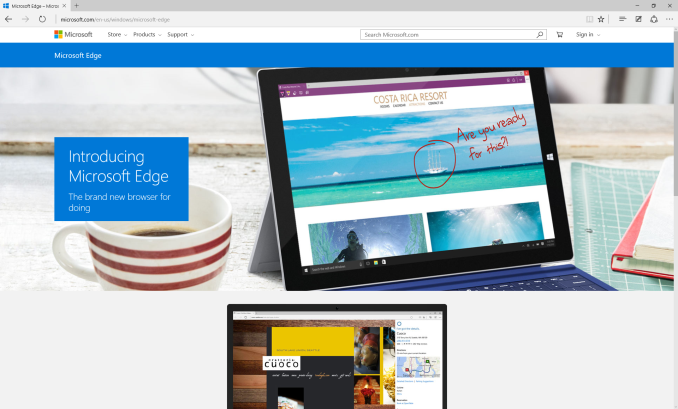

 Quote
Quote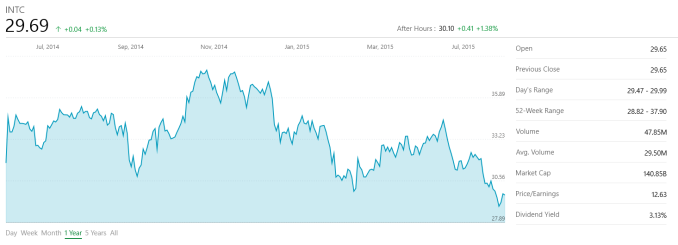
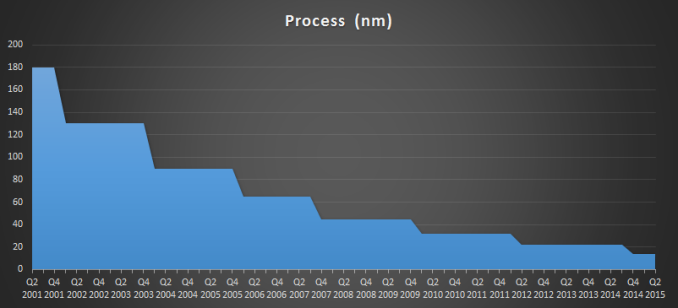

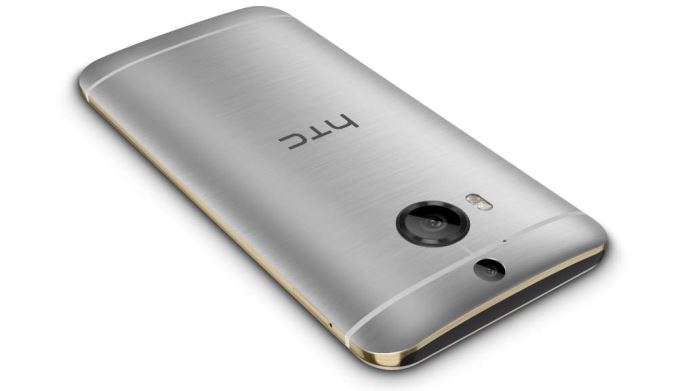
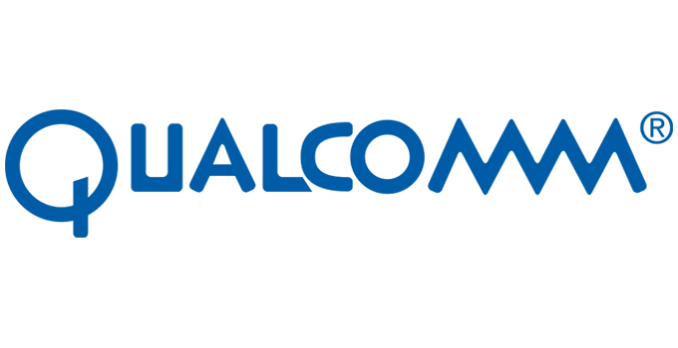
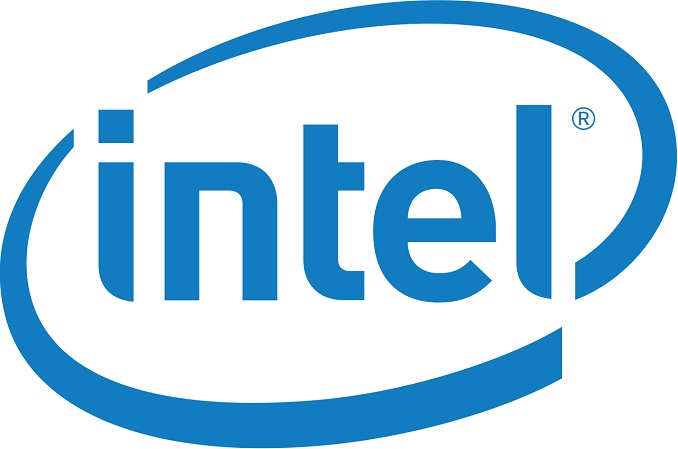
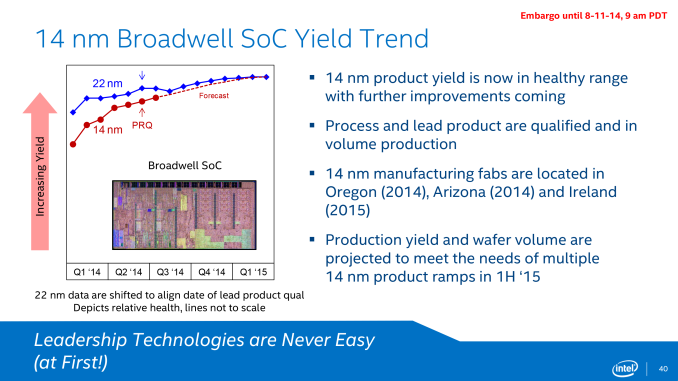

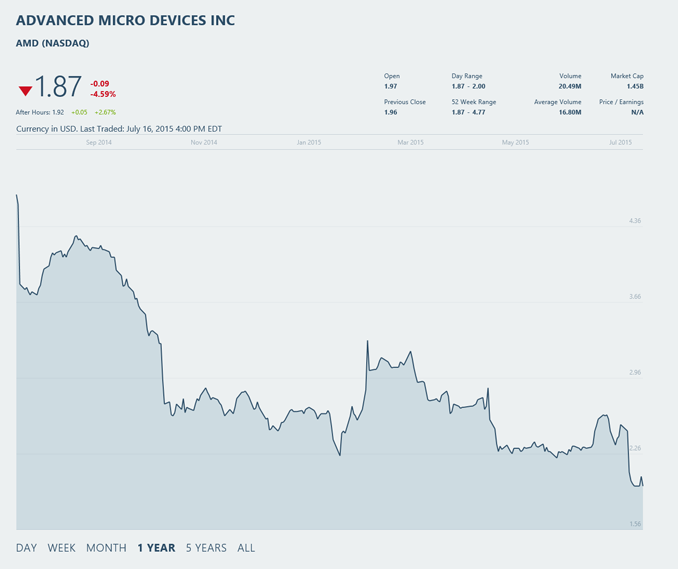

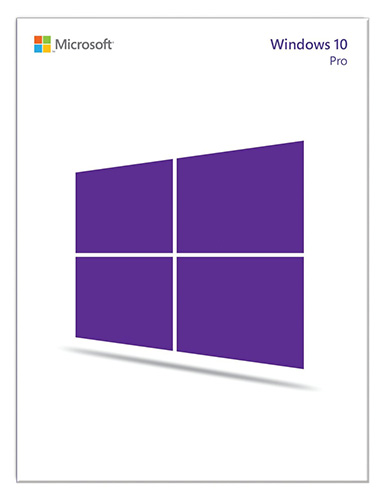
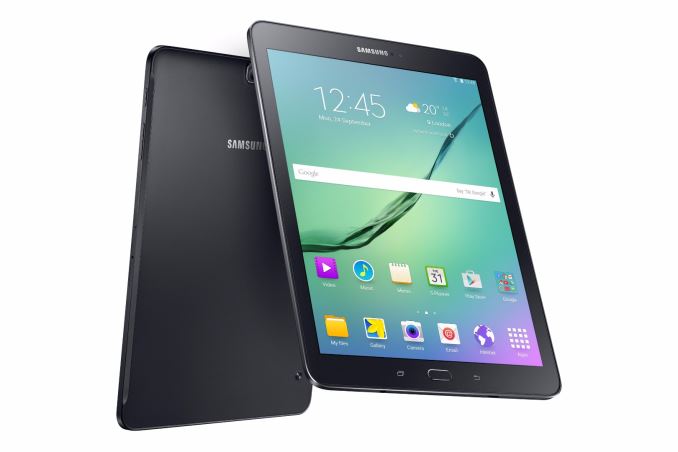
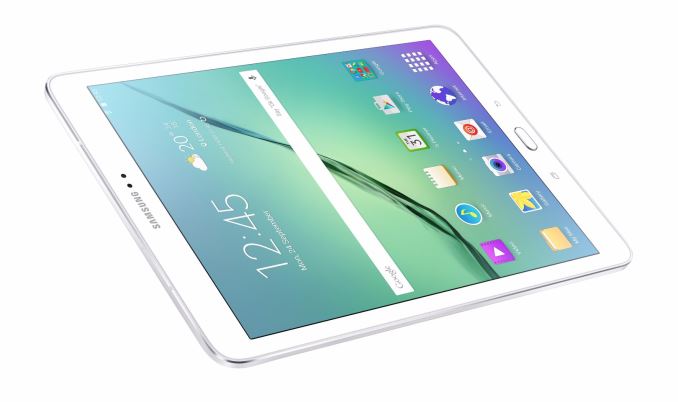
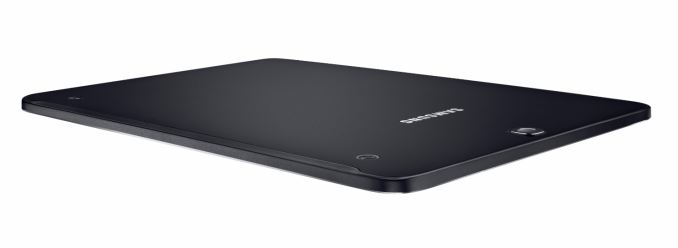
















Bookmarks